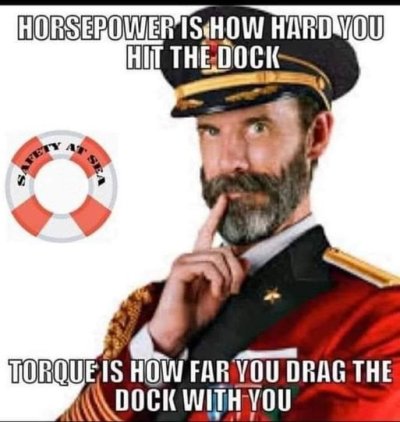I'd put thruster on our Tolly if I needed to. Luckily the designers [Monk and Tollifson] spread our props fairly wide off the center. And... they put on good sized rudders close to each prop.
Result is a twin screw cruiser that reacts very well to its engines' props and the rudders. When docking in most cases... I make sure the rudders are straight ahead and maneauver the boat exclusively with trany shifting and mellow bursts of power [forward or reverse per engine] as needed. For quick turn on just about its length... one engine in forward and one in reverse with power applied as required
I do my close quarter maneuvers at VERY slow speed. Idle rpm works wonders when using shifting sequences and gentle power bursts.
Another good handling chariatic of our Tolly: At idle rpm on both screws with engines synchronized, by using the helm or shifting the engines [bumping rpm if desired], she's no problem for maintaining a straight line cruise or creating a turn.
Result is a twin screw cruiser that reacts very well to its engines' props and the rudders. When docking in most cases... I make sure the rudders are straight ahead and maneauver the boat exclusively with trany shifting and mellow bursts of power [forward or reverse per engine] as needed. For quick turn on just about its length... one engine in forward and one in reverse with power applied as required
I do my close quarter maneuvers at VERY slow speed. Idle rpm works wonders when using shifting sequences and gentle power bursts.
Another good handling chariatic of our Tolly: At idle rpm on both screws with engines synchronized, by using the helm or shifting the engines [bumping rpm if desired], she's no problem for maintaining a straight line cruise or creating a turn.
Last edited:





